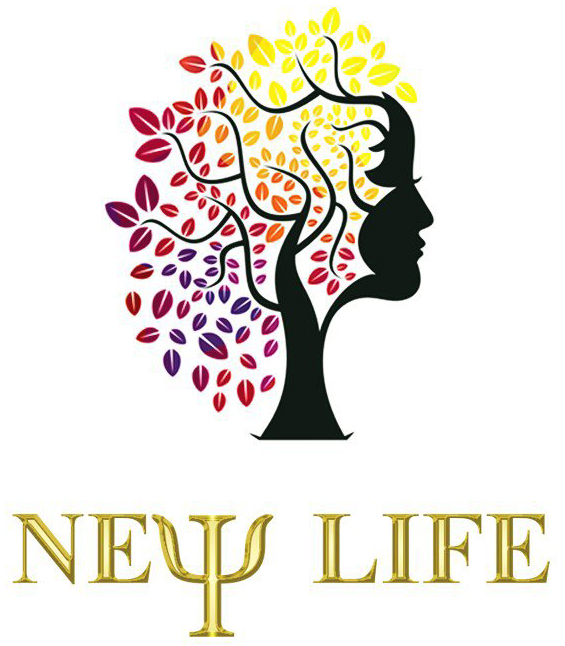1. Introduction: Understanding the Power of Simple Symbols in Modern Design
a. Defining symbols in design: from universal icons to brand identifiers
Symbols in design serve as visual shorthand, conveying complex ideas, functions, or brand identities through simple, recognizable forms. From the universally understood “play” icon to iconic logos like Nike’s swoosh, symbols transcend language barriers. They act as visual signatures that quickly communicate purpose, evoke emotions, and foster brand recognition. Over time, many symbols evolve from basic icons to powerful identifiers that encapsulate a brand’s essence, such as the apple in Apple Inc.’s logo or the swoosh in Nike.
b. The significance of simplicity: why minimalism resonates in contemporary visuals
In an era saturated with information, minimalism offers clarity and focus. Simple symbols cut through visual noise, making messages more digestible and memorable. Research shows that minimalistic visuals are more quickly processed by the brain, leading to faster recognition and recall. This is why brands increasingly adopt clean, straightforward symbols; they foster a sense of modernity, sophistication, and trust.
c. Overview of how simple symbols influence perception and behavior
Simple symbols influence perceptions by creating associations of familiarity, trustworthiness, and emotional resonance. They shape consumer behavior by guiding decisions, reinforcing brand loyalty, and facilitating seamless user experiences. For example, a well-designed minimalist icon in an app interface can enhance usability and confidence, ultimately increasing engagement.
2. The Psychological Impact of Simplicity in Symbols
a. Cognitive ease and brand recall: how simple symbols enhance memorability
Cognitive science research indicates that simple symbols reduce mental load, making them easier to recognize and remember. The brain processes minimal visual cues more efficiently, leading to higher recall rates. For instance, the Apple logo’s minimal design ensures that consumers instantly associate it with innovation and quality, even after brief exposure.
b. Trust and familiarity: the role of recognizable symbols in consumer confidence
Familiar symbols foster trust by providing a sense of stability and predictability. Recognizable icons reduce uncertainty, making users more comfortable engaging with brands or services. The consistency of the Nike swoosh across various products exemplifies this trust-building function.
c. Emotional resonance: evoking feelings through minimalist visual cues
Minimalist symbols often evoke strong emotional responses because they tap into subconscious associations. For example, a simple heart icon universally signifies love or care, eliciting positive feelings that enhance brand affinity. The emotional power of minimalist design lies in its ability to communicate complex sentiments with minimal visual complexity.
3. Historical Evolution of Symbols in Design
a. From Edison’s string lights to modern lighting aesthetics: the transformation of simple symbols into standards
The evolution of symbols is evident in technological advances. Edison’s early string lights, with their simple filament shapes, laid the groundwork for modern lighting symbols that emphasize minimal forms. Today, iconic lighting symbols—like the minimalist bulb or power icons—serve functional and aesthetic purposes, reflecting a shift towards simplicity in design standards.
b. The enduring power of basic shapes and lines in visual communication
Throughout history, basic geometric shapes—circles, squares, triangles—have remained central to visual language. Their universality and ease of recognition make them ideal for conveying messages quickly and effectively. For instance, the universally recognized “no entry” sign uses a simple circle with a line, demonstrating the lasting impact of fundamental shapes.
c. Case studies: iconic symbols that have stood the test of time
Icons such as the peace symbol, the recycling triangle, and the Wi-Fi signal exemplify how simple, consistent design fosters lasting recognition. These symbols have persisted because their minimal forms effectively communicate essential concepts across cultures and generations.
4. The Role of Symbols in Shaping Consumer Perception and Value
a. Use of gold accents to elevate perceived value: a symbolic choice in product design
Gold accents in packaging or branding elements symbolize luxury, exclusivity, and high quality. This visual cue influences consumer perception, often justifying premium pricing. An example is luxury watch brands that incorporate gold elements into their minimalist logos and packaging to communicate value.
b. Live presenters vs. pre-recorded content: trust-building through human symbols
Human elements—such as live presenters—serve as symbols of authenticity and trust. In digital marketing, real-time interactions create a sense of immediacy and reliability. Conversely, pre-recorded content can be perceived as less personal, although consistent branding ensures recognition and comfort.
c. The influence of symbolic design elements on purchasing decisions
Design elements like simple logos, color schemes, and layout contribute to perceived value and trustworthiness. For example, minimalist product packaging with subtle gold accents can elevate perceived quality, influencing consumers’ willingness to purchase. This strategic use of symbolism aligns with studies showing that visual simplicity correlates with higher sales conversion.
5. Modern Examples of Simple Symbols in Action
a. The Monopoly Big Baller: a contemporary illustration of symbolic minimalism in branding and product design
The Monopoly Big Baller exemplifies how simple symbols can effectively communicate excitement and exclusivity in modern gaming. Its logo employs minimalistic graphics—bold lines and straightforward iconography—that resonate globally, demonstrating timeless design principles. This approach helps the game stand out in a crowded market, showcasing how minimalism enhances recognition and appeal.
b. Minimalist logos and their global impact: Apple, Nike, and others
| Brand | Symbol | Impact |
|---|---|---|
| Apple | Silhouette of an apple with a bite | Global recognition, association with innovation |
| Nike | Swoosh | Symbol of movement and athleticism |
c. Digital interfaces: icons and symbols that streamline user experience
Icons such as the trash bin for delete, magnifying glass for search, or hamburger menu exemplify minimalist design that enhances usability. Their simplicity ensures quick recognition, reducing cognitive load and improving interaction efficiency across devices.
6. Non-Obvious Dimensions of Symbolic Simplicity
a. Cultural interpretations of simple symbols: bridging global audiences
While minimal symbols are designed for universality, cultural nuances can influence interpretation. For example, the color white symbolizes purity in Western cultures but mourning in some Asian traditions. Designers must consider these differences to ensure symbols communicate effectively across diverse audiences.
b. The neuroscience behind symbol recognition and processing
Neuroscientific studies reveal that the brain processes simple visual stimuli in areas dedicated to rapid recognition, such as the fusiform face area. Minimalist symbols leverage this efficiency, leading to quicker brand recognition and emotional responses.
c. Ethical considerations: symbols as tools for manipulation vs. honest communication
While symbols can promote transparency, they also pose risks of manipulation—such as deceptive minimal branding that conceals product flaws. Ethical design advocates for clarity and honesty, ensuring symbols serve genuine communication rather than exploitation.
7. Designing with Simplicity: Principles and Best Practices
a. Striking the balance between minimalism and clarity
Effective symbols avoid oversimplification that leads to ambiguity. Clear, concise visuals that communicate core messages without unnecessary detail are key. For instance, the universal “pause” icon—two vertical bars—strikes this balance by being straightforward yet unmistakable.
b. Choosing symbols that align with brand identity and values
Symbols should reflect the brand’s core message and personality. A tech company might prefer sleek, futuristic icons, whereas a children’s brand might opt for playful, rounded shapes. Consistency in style reinforces brand recognition.
c. Testing and iterating: ensuring symbols communicate effectively across contexts
User testing across demographics and mediums helps refine symbols. Variations might be necessary for cultural adaptation or accessibility. Iterative design ensures the symbol remains effective and meaningful.
8. Future Trends: Evolving Simplicity in a Complex World
a. The rise of adaptive and dynamic symbols in digital environments
Digital platforms enable symbols to adapt in real-time based on context, culture, or user preferences. For example, app icons that change appearance according to theme settings exemplify this evolution, maintaining simplicity while enhancing relevance.
b. Integrating cultural diversity into universal symbols
Designers are exploring ways to incorporate multicultural elements into minimalist symbols, fostering inclusivity. Subtle variations in shape or color can communicate culturally specific meanings without compromising universality.
c. The potential of simple symbols to foster inclusivity and innovation
As society values diversity, symbols that are adaptable and sensitive to different identities will become more prevalent. Minimalist design’s flexibility allows for innovative ways to communicate inclusivity, making symbols powerful tools for social progress.
9. Conclusion: Harnessing the Power of Simple Symbols for Impactful Design
a. Recap of key insights on simplicity and perception
Simple symbols leverage universal shapes, minimalism, and strategic visual cues to communicate effectively, evoke emotions, and foster trust. Their evolution underscores their timeless relevance in design.
b. The strategic importance of minimalism in modern branding
Minimalist symbols enhance brand recognition, streamline user experience, and elevate perceived value. They are essential tools in crafting modern, impactful visual identities.
c. Final thoughts: cultivating trust and recognition through deliberate simplicity
Deliberate simplicity in design is a strategic asset. By focusing on clarity, cultural sensitivity, and emotional resonance, brands can build lasting connections with their audiences—transforming basic symbols into powerful catalysts for engagement.
For those interested in how symbolic minimalism can be applied in innovative ways, exploring concepts like the more info on bonus triggers offers insights into modern adaptations of timeless principles.



